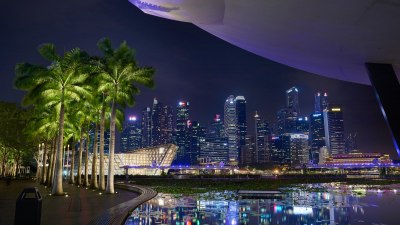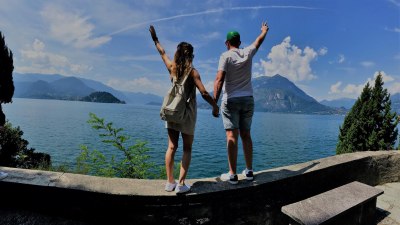How to Train for a Long-Distance Bicycle Journey
Essential tips and guidelines to effectively train for a long-distance bicycle journey.

Training for a long-distance bicycle journey requires preparation, commitment, and a strategic approach to building endurance. Whether you’re aiming to cycle across a state, country, or the entire world, the right training can make all the difference in your comfort and performance. In this guide, we’ll explore effective methods and tips for training so you can tackle your long-distance ride with confidence.
Setting Your Goals
The first step in your training journey is establishing clear, achievable goals. Determining the distance you aim to cover and the duration of your journey helps tailor your training regimen. For example, if you plan to cycle 100 miles over several days, break it down into manageable daily targets. This approach not only assists with physical preparation but also aids in mental readiness.
Assessing Your Current Fitness Level
Before embarking on a new training regimen, it's crucial to assess your current fitness level. Take stock of your cycling experience, stamina, and any physical limitations. If you’re new to biking or haven't been active for a while, starting slowly and gradually increasing your efforts will help prevent injuries.
Building a Training Plan
Your training plan should encompass various aspects of cycling fitness, including endurance, strength, flexibility, and recovery. Here’s a breakdown of what to include in your plan:
1. Endurance Training
Endurance is crucial for long-distance cycling. Begin with shorter rides, gradually increasing the distance each week. Aim for at least one long ride each week, progressively extending its duration. This will build your stamina and prepare your body for extended periods on the bike.
2. Strength Training
Incorporating strength training into your fitness routine can significantly enhance your cycling performance. Focusing on the core, legs, and back will improve your pedaling efficiency and power. You can perform exercises such as squats, lunges, and planks to build the necessary muscle groups.
3. Flexibility and Mobility
Flexibility is an often-overlooked component of training but is essential to prevent injury and ensure a comfortable ride. Stretching regularly and possibly even incorporating yoga into your routine can improve your overall mobility and help with recovery.
4. Recovery
Don't underestimate the importance of recovery in your training plan. Allow for rest days and listen to your body. Overtraining can lead to fatigue and injury, so ensure that you get adequate sleep, nutrition, and hydration. Active recovery, such as light cycling or walking, can also help rejuvenate your muscles.
Nutritional Considerations
1. Carbohydrate Intake
Carbohydrates are your body’s primary fuel source during prolonged exercise activities. Incorporate whole grains, fruits, and vegetables into your meals to maintain energy levels. Consider consuming simple carbs during long rides for a quick energy boost.
2. Protein for Recovery
After long rides, ensure you’re consuming enough protein to aid muscle repair. Good sources include lean meats, legumes, and dairy products. A post-ride recovery shake can also be effective.
3. Fats for Sustained Energy
Healthy fats are essential for overall energy, especially in longer rides where your body will need to draw on multiple energy sources. Include avocados, nuts, and olive oil in your diet.
Gear Selection
Your choice of gear can positively or negatively impact your long-distance journey. Selecting the right bike, clothing, and accessories ensures a comfortable and enjoyable ride. Here are some key considerations:
1. Choosing the Right Bicycle
Whether you opt for a road bike, touring bike, or hybrid bike, it’s essential to choose one that fits your riding style and comfort. Ensure that the bike is properly fitted to your body to avoid discomfort and potential injury. Don’t hesitate to make adjustments as needed, including saddle height and handlebar position.
2. Proper Cycling Attire
Comfortable clothing can make all the difference on long rides. Look for breathable, moisture-wicking fabrics that provide cushioning where necessary. Cycling shorts with padding can help reduce discomfort during long periods in the saddle.
3. Necessary Accessories
Invest in essential accessories, such as a reliable helmet, lights, and a bike repair kit. Additionally, consider using a cycling computer or smartphone app to track your mileage and monitor your progress. On long rides, proper hydration systems, such as water bottles or hydration packs, are also essential.
Gradual Progression and Adaptation
As you begin training, focus on gradual progression. Increasing your mileage too quickly can lead to burnout or injury. A common guideline is to increase your weekly mileage by no more than 10%. Pay close attention to how your body responds to increased training loads and make adjustments accordingly.
Simulating Long Rides
As your journey date approaches, it’s beneficial to simulate your intended ride experience. Organize multi-day rides to practice camping or staying overnight. This experience allows you to test your gear, nutrition, and overall preparation for the actual journey.
Tapering Before the Journey
Tapering involves reducing your training load in the weeks leading up to your journey. This process allows your body to recover and store energy, ensuring you’re fresh and ready for the ride ahead. Start your taper about one to two weeks before your long-distance journey, decreasing the intensity and volume of your rides during this time.
Mental Preparation
Long-distance cycling can be as much a mental challenge as a physical one. Set aside time for mental conditioning during your training. Visualization techniques can help prepare you for the journey by mentally rehearsing various aspects of the ride, such as difficult terrains or weather conditions. Focus on positive outcomes to build confidence.
On-the-Road Strategies
During your ride, implement the strategies you practiced in training. Pay attention to pacing, staying hydrated, and taking breaks when needed. Establish a rhythm that encourages consistent output without leading to fatigue. Be mindful of your surroundings and adapt as necessary, whether that involves navigating difficult terrain or focusing on nutrition strategies in response to fatigue.
Post-Journey Recovery
After completing your long-distance journey, prioritize recovery to help your body heal. Consider taking an active recovery approach, including light cycling or walking. Hydrate well and consume a balanced meal rich in proteins and carbohydrates. Listen to your body, as rest is essential for optimal recovery. Plan for enough time to recuperate before embarking on any new physical challenges.
Training for a long-distance bicycle journey is an adventure that combines physical exertion, mental fortitude, and meticulous preparation. By setting clear goals, building a tailored training plan, focusing on nutrition, selecting appropriate gear, and preparing mentally, you can conquer long-distance cycling challenges. Embrace the journey that lies ahead, and enjoy the many achievements along the ride. Pedal into the open road with confidence!











